Zifan Xu
The Essentials of AI for Life and Society: An AI Literacy Course for the University Community
Jan 13, 2025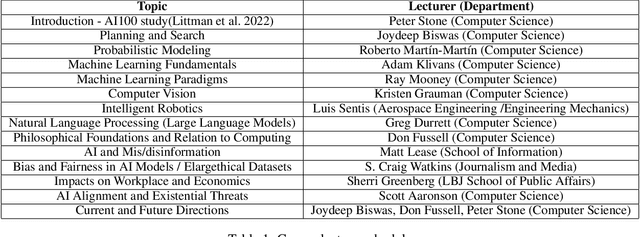

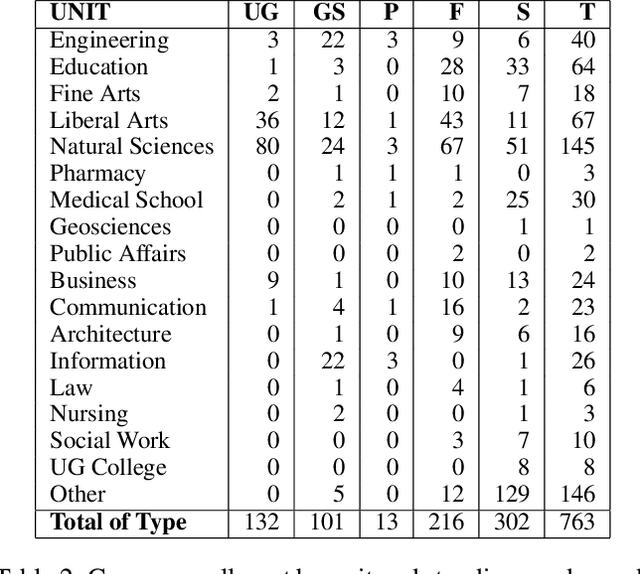
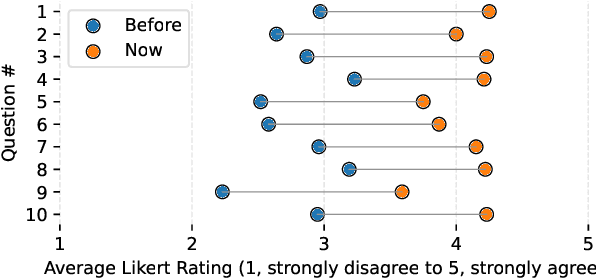
Abstract:We describe the development of a one-credit course to promote AI literacy at The University of Texas at Austin. In response to a call for the rapid deployment of class to serve a broad audience in Fall of 2023, we designed a 14-week seminar-style course that incorporated an interdisciplinary group of speakers who lectured on topics ranging from the fundamentals of AI to societal concerns including disinformation and employment. University students, faculty, and staff, and even community members outside of the University, were invited to enroll in this online offering: The Essentials of AI for Life and Society. We collected feedback from course participants through weekly reflections and a final survey. Satisfyingly, we found that attendees reported gains in their AI literacy. We sought critical feedback through quantitative and qualitative analysis, which uncovered challenges in designing a course for this general audience. We utilized the course feedback to design a three-credit version of the course that is being offered in Fall of 2024. The lessons we learned and our plans for this new iteration may serve as a guide to instructors designing AI courses for a broad audience.
Grounded Curriculum Learning
Sep 29, 2024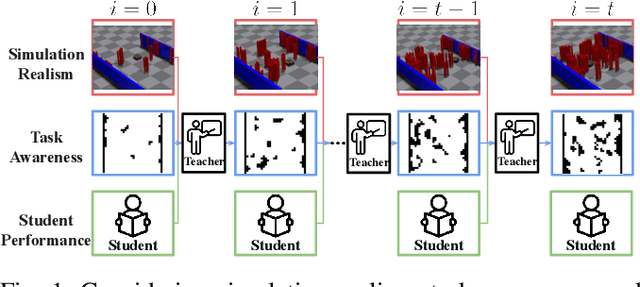
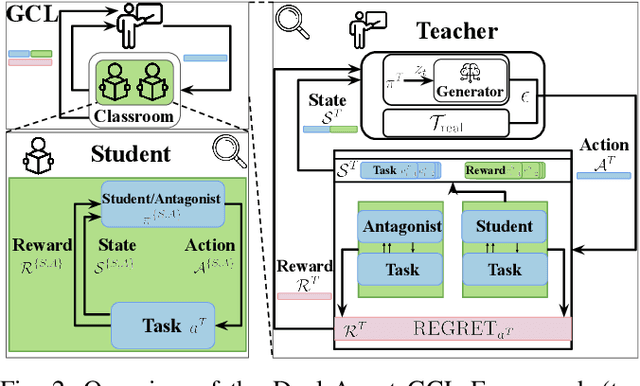
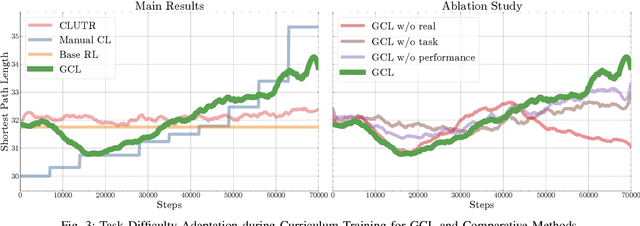
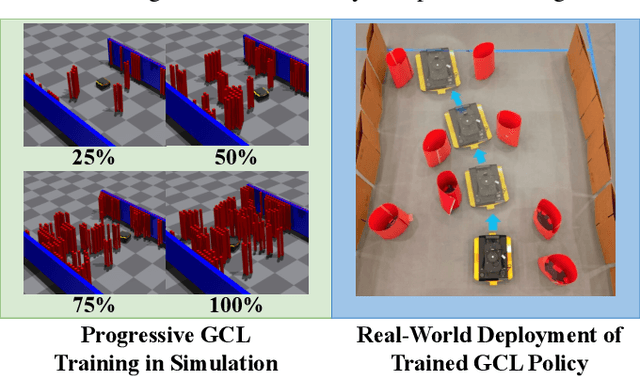
Abstract:The high cost of real-world data for robotics Reinforcement Learning (RL) leads to the wide usage of simulators. Despite extensive work on building better dynamics models for simulators to match with the real world, there is another, often-overlooked mismatch between simulations and the real world, namely the distribution of available training tasks. Such a mismatch is further exacerbated by existing curriculum learning techniques, which automatically vary the simulation task distribution without considering its relevance to the real world. Considering these challenges, we posit that curriculum learning for robotics RL needs to be grounded in real-world task distributions. To this end, we propose Grounded Curriculum Learning (GCL), which aligns the simulated task distribution in the curriculum with the real world, as well as explicitly considers what tasks have been given to the robot and how the robot has performed in the past. We validate GCL using the BARN dataset on complex navigation tasks, achieving a 6.8% and 6.5% higher success rate compared to a state-of-the-art CL method and a curriculum designed by human experts, respectively. These results show that GCL can enhance learning efficiency and navigation performance by grounding the simulation task distribution in the real world within an adaptive curriculum.
Sample Efficient Myopic Exploration Through Multitask Reinforcement Learning with Diverse Tasks
Mar 06, 2024



Abstract:Multitask Reinforcement Learning (MTRL) approaches have gained increasing attention for its wide applications in many important Reinforcement Learning (RL) tasks. However, while recent advancements in MTRL theory have focused on the improved statistical efficiency by assuming a shared structure across tasks, exploration--a crucial aspect of RL--has been largely overlooked. This paper addresses this gap by showing that when an agent is trained on a sufficiently diverse set of tasks, a generic policy-sharing algorithm with myopic exploration design like $\epsilon$-greedy that are inefficient in general can be sample-efficient for MTRL. To the best of our knowledge, this is the first theoretical demonstration of the "exploration benefits" of MTRL. It may also shed light on the enigmatic success of the wide applications of myopic exploration in practice. To validate the role of diversity, we conduct experiments on synthetic robotic control environments, where the diverse task set aligns with the task selection by automatic curriculum learning, which is empirically shown to improve sample-efficiency.
Dexterous Legged Locomotion in Confined 3D Spaces with Reinforcement Learning
Mar 06, 2024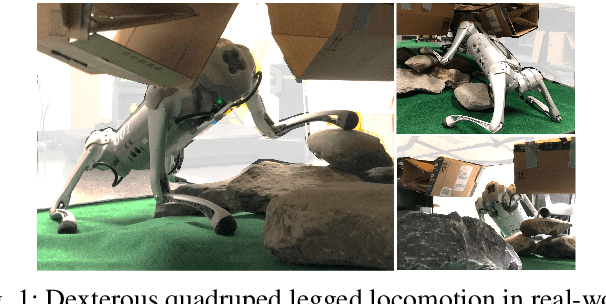
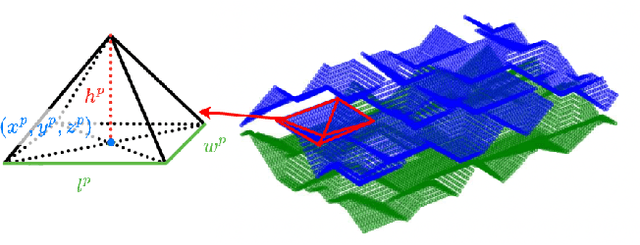

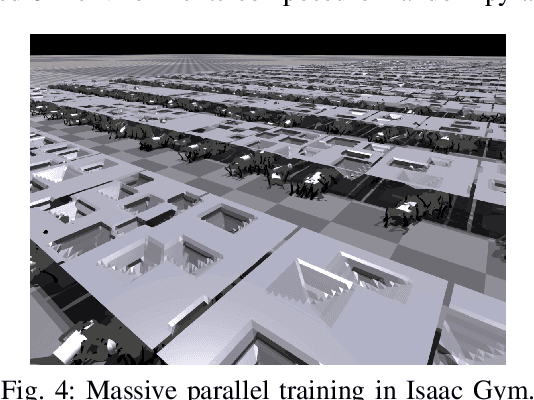
Abstract:Recent advances of locomotion controllers utilizing deep reinforcement learning (RL) have yielded impressive results in terms of achieving rapid and robust locomotion across challenging terrain, such as rugged rocks, non-rigid ground, and slippery surfaces. However, while these controllers primarily address challenges underneath the robot, relatively little research has investigated legged mobility through confined 3D spaces, such as narrow tunnels or irregular voids, which impose all-around constraints. The cyclic gait patterns resulted from existing RL-based methods to learn parameterized locomotion skills characterized by motion parameters, such as velocity and body height, may not be adequate to navigate robots through challenging confined 3D spaces, requiring both agile 3D obstacle avoidance and robust legged locomotion. Instead, we propose to learn locomotion skills end-to-end from goal-oriented navigation in confined 3D spaces. To address the inefficiency of tracking distant navigation goals, we introduce a hierarchical locomotion controller that combines a classical planner tasked with planning waypoints to reach a faraway global goal location, and an RL-based policy trained to follow these waypoints by generating low-level motion commands. This approach allows the policy to explore its own locomotion skills within the entire solution space and facilitates smooth transitions between local goals, enabling long-term navigation towards distant goals. In simulation, our hierarchical approach succeeds at navigating through demanding confined 3D environments, outperforming both pure end-to-end learning approaches and parameterized locomotion skills. We further demonstrate the successful real-world deployment of our simulation-trained controller on a real robot.
Latent Skill Discovery for Chain-of-Thought Reasoning
Dec 07, 2023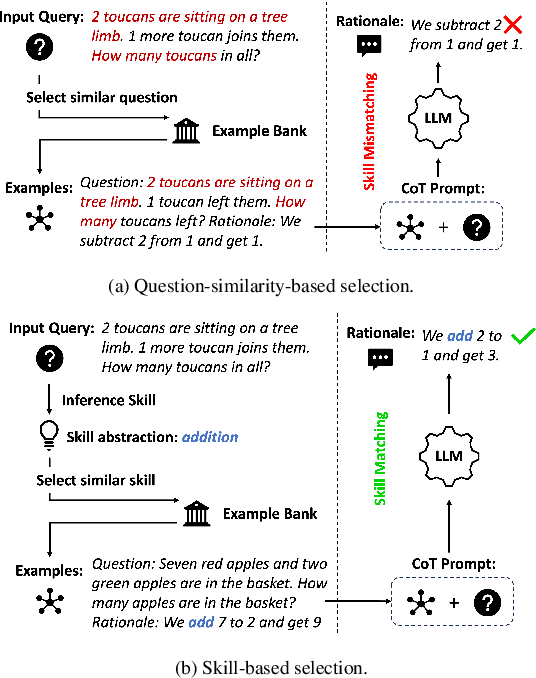
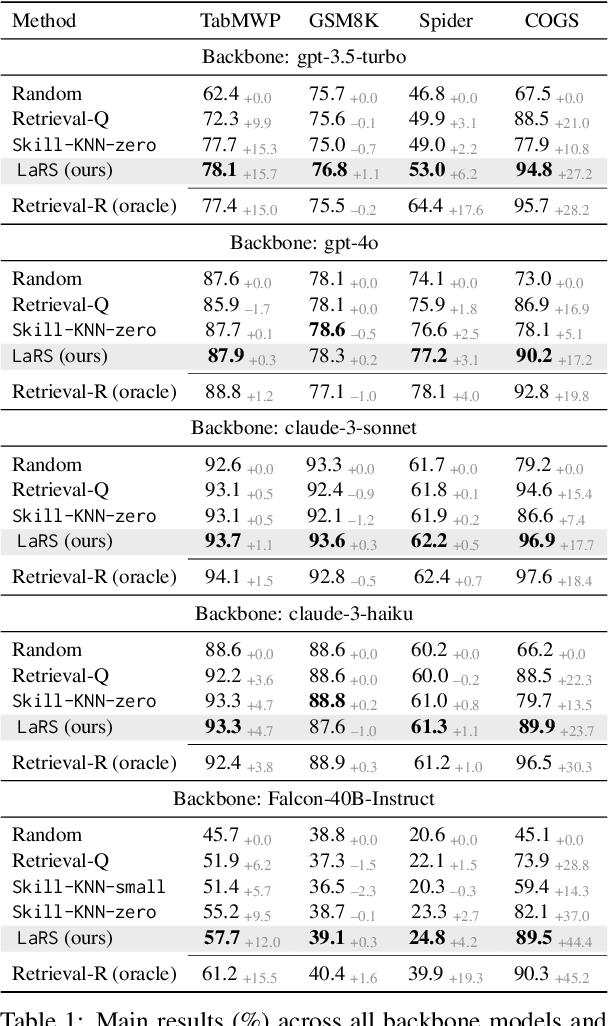

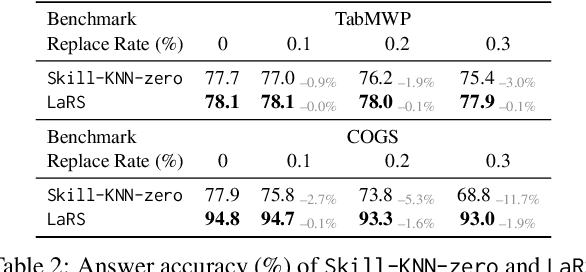
Abstract:Recent advances in Large Language Models (LLMs) have led to an emergent ability of chain-of-thought (CoT) prompting, a prompt reasoning strategy that adds intermediate rationale steps between questions and answers to construct prompts. Conditioned on these prompts, LLMs can effectively learn in context to generate rationales that lead to more accurate answers than when answering the same question directly. To design LLM prompts, one important setting, called demonstration selection, considers selecting demonstrations from an example bank. Existing methods use various heuristics for this selection, but for CoT prompting, which involves unique rationales, it is essential to base the selection upon the intrinsic skills that CoT rationales need, for instance, the skills of addition or subtraction for math word problems. To address this requirement, we introduce a novel approach named Reasoning Skill Discovery (RSD) that use unsupervised learning to create a latent space representation of rationales, called a reasoning skill. Simultaneously, RSD learns a reasoning policy to determine the required reasoning skill for a given question. This can then guide the selection of examples that demonstrate the required reasoning skills. Our approach offers several desirable properties: it is (1) theoretically grounded, (2) sample-efficient, requiring no LLM inference or manual prompt design, and (3) LLM-agnostic. Empirically, RSD outperforms existing methods by up to 6% in terms of the answer accuracy across multiple reasoning tasks.
Autonomous Ground Navigation in Highly Constrained Spaces: Lessons learned from The 2nd BARN Challenge at ICRA 2023
Aug 06, 2023Abstract:The 2nd BARN (Benchmark Autonomous Robot Navigation) Challenge took place at the 2023 IEEE International Conference on Robotics and Automation (ICRA 2023) in London, UK and continued to evaluate the performance of state-of-the-art autonomous ground navigation systems in highly constrained environments. Compared to The 1st BARN Challenge at ICRA 2022 in Philadelphia, the competition has grown significantly in size, doubling the numbers of participants in both the simulation qualifier and physical finals: Ten teams from all over the world participated in the qualifying simulation competition, six of which were invited to compete with each other in three physical obstacle courses at the conference center in London, and three teams won the challenge by navigating a Clearpath Jackal robot from a predefined start to a goal with the shortest amount of time without colliding with any obstacle. The competition results, compared to last year, suggest that the teams are making progress toward more robust and efficient ground navigation systems that work out-of-the-box in many obstacle environments. However, a significant amount of fine-tuning is still needed onsite to cater to different difficult navigation scenarios. Furthermore, challenges still remain for many teams when facing extremely cluttered obstacles and increasing navigation speed. In this article, we discuss the challenge, the approaches used by the three winning teams, and lessons learned to direct future research.
A Domain-Agnostic Approach for Characterization of Lifelong Learning Systems
Jan 18, 2023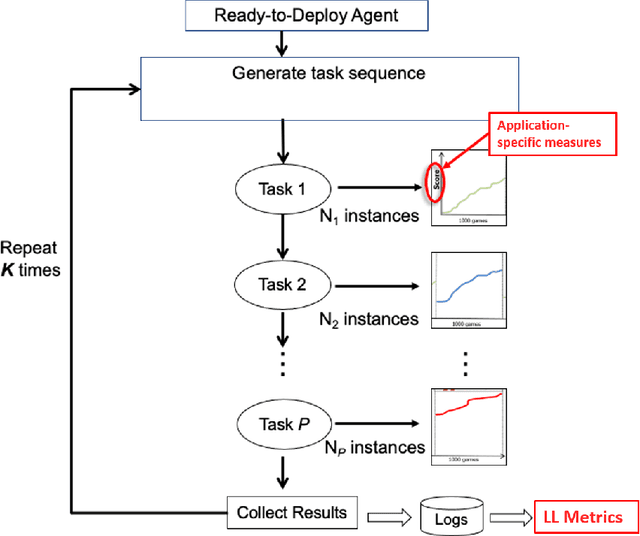
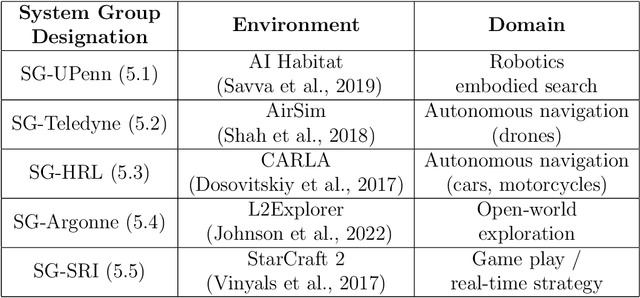


Abstract:Despite the advancement of machine learning techniques in recent years, state-of-the-art systems lack robustness to "real world" events, where the input distributions and tasks encountered by the deployed systems will not be limited to the original training context, and systems will instead need to adapt to novel distributions and tasks while deployed. This critical gap may be addressed through the development of "Lifelong Learning" systems that are capable of 1) Continuous Learning, 2) Transfer and Adaptation, and 3) Scalability. Unfortunately, efforts to improve these capabilities are typically treated as distinct areas of research that are assessed independently, without regard to the impact of each separate capability on other aspects of the system. We instead propose a holistic approach, using a suite of metrics and an evaluation framework to assess Lifelong Learning in a principled way that is agnostic to specific domains or system techniques. Through five case studies, we show that this suite of metrics can inform the development of varied and complex Lifelong Learning systems. We highlight how the proposed suite of metrics quantifies performance trade-offs present during Lifelong Learning system development - both the widely discussed Stability-Plasticity dilemma and the newly proposed relationship between Sample Efficient and Robust Learning. Further, we make recommendations for the formulation and use of metrics to guide the continuing development of Lifelong Learning systems and assess their progress in the future.
Learning Real-world Autonomous Navigation by Self-Supervised Environment Synthesis
Oct 10, 2022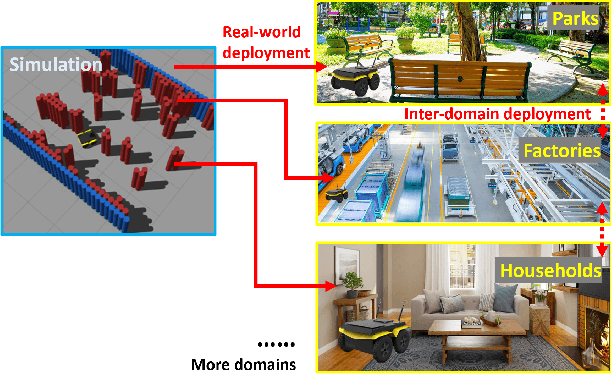
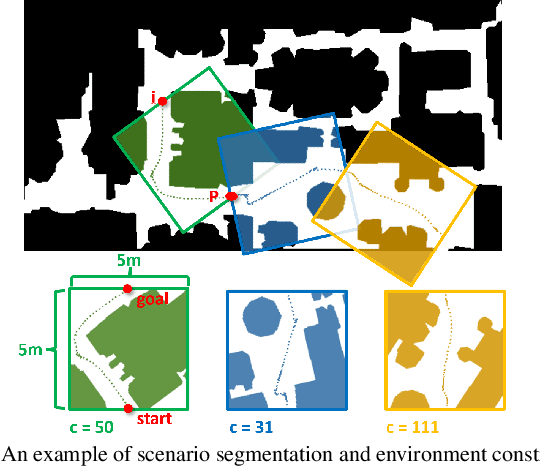
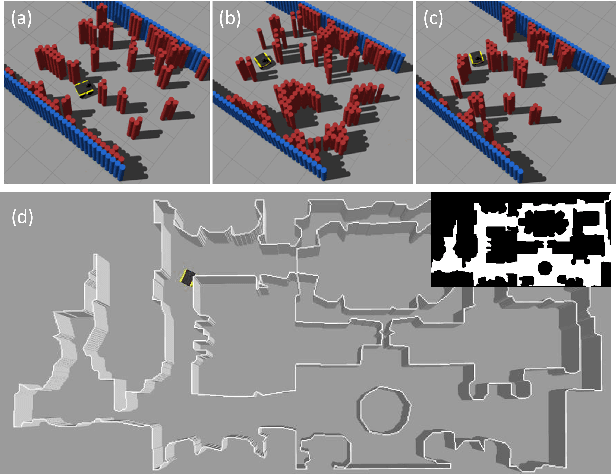

Abstract:Machine learning approaches have recently enabled autonomous navigation for mobile robots in a data-driven manner. Since most existing learning-based navigation systems are trained with data generated in artificially created training environments, during real-world deployment at scale, it is inevitable that robots will encounter unseen scenarios, which are out of the training distribution and therefore lead to poor real-world performance. On the other hand, directly training in the real world is generally unsafe and inefficient. To address this issue, we introduce Self-supervised Environment Synthesis (SES), in which, after real-world deployment with safety and efficiency requirements, autonomous mobile robots can utilize experience from the real-world deployment, reconstruct navigation scenarios, and synthesize representative training environments in simulation. Training in these synthesized environments leads to improved future performance in the real world. The effectiveness of SES at synthesizing representative simulation environments and improving real-world navigation performance is evaluated via a large-scale deployment in a high-fidelity, realistic simulator and a small-scale deployment on a physical robot.
Benchmarking Reinforcement Learning Techniques for Autonomous Navigation
Oct 10, 2022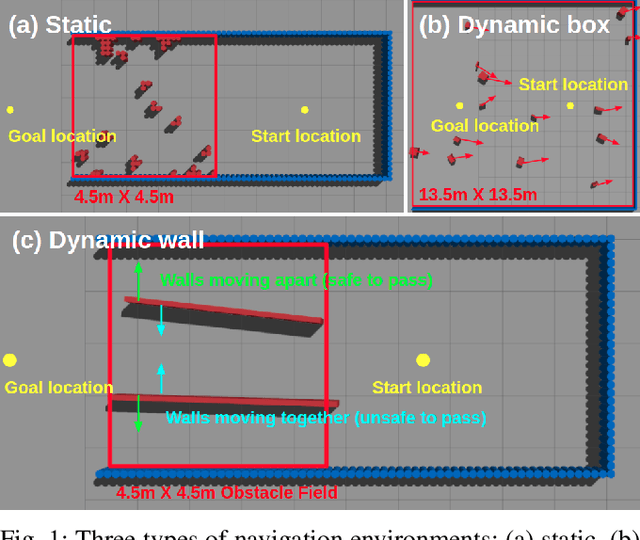
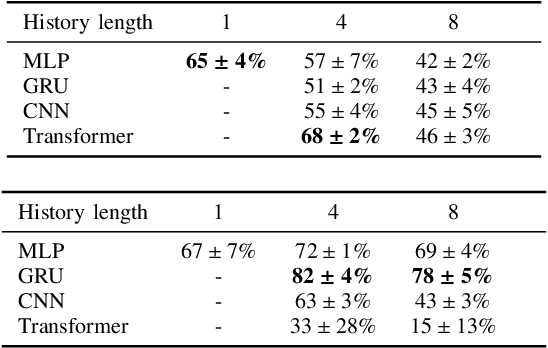


Abstract:Deep reinforcement learning (RL) has brought many successes for autonomous robot navigation. However, there still exists important limitations that prevent real-world use of RL-based navigation systems. For example, most learning approaches lack safety guarantees; and learned navigation systems may not generalize well to unseen environments. Despite a variety of recent learning techniques to tackle these challenges in general, a lack of an open-source benchmark and reproducible learning methods specifically for autonomous navigation makes it difficult for roboticists to choose what learning methods to use for their mobile robots and for learning researchers to identify current shortcomings of general learning methods for autonomous navigation. In this paper, we identify four major desiderata of applying deep RL approaches for autonomous navigation: (D1) reasoning under uncertainty, (D2) safety, (D3) learning from limited trial-and-error data, and (D4) generalization to diverse and novel environments. Then, we explore four major classes of learning techniques with the purpose of achieving one or more of the four desiderata: memory-based neural network architectures (D1), safe RL (D2), model-based RL (D2, D3), and domain randomization (D4). By deploying these learning techniques in a new open-source large-scale navigation benchmark and real-world environments, we perform a comprehensive study aimed at establishing to what extent can these techniques achieve these desiderata for RL-based navigation systems.
Autonomous Ground Navigation in Highly Constrained Spaces: Lessons learned from The BARN Challenge at ICRA 2022
Aug 22, 2022
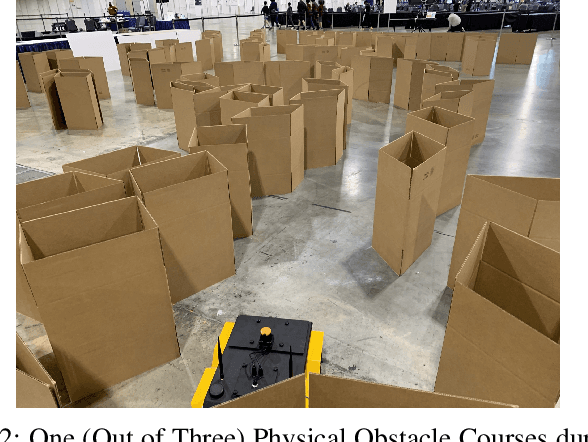
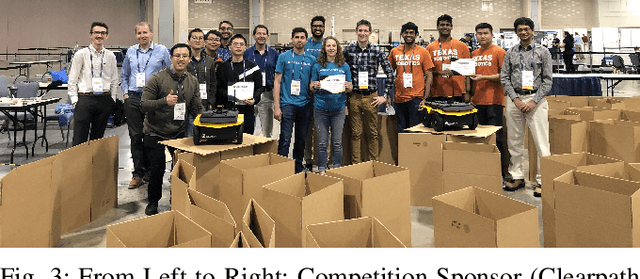
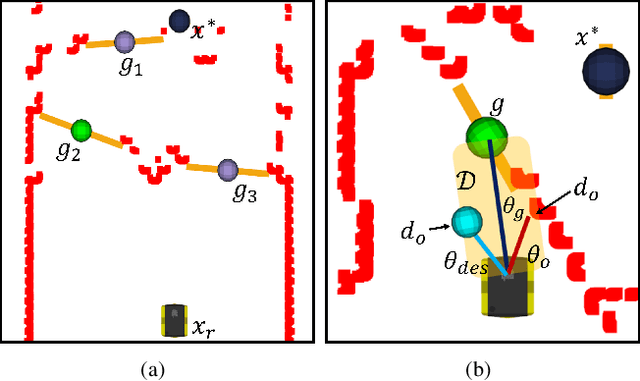
Abstract:The BARN (Benchmark Autonomous Robot Navigation) Challenge took place at the 2022 IEEE International Conference on Robotics and Automation (ICRA 2022) in Philadelphia, PA. The aim of the challenge was to evaluate state-of-the-art autonomous ground navigation systems for moving robots through highly constrained environments in a safe and efficient manner. Specifically, the task was to navigate a standardized, differential-drive ground robot from a predefined start location to a goal location as quickly as possible without colliding with any obstacles, both in simulation and in the real world. Five teams from all over the world participated in the qualifying simulation competition, three of which were invited to compete with each other at a set of physical obstacle courses at the conference center in Philadelphia. The competition results suggest that autonomous ground navigation in highly constrained spaces, despite seeming ostensibly simple even for experienced roboticists, is actually far from being a solved problem. In this article, we discuss the challenge, the approaches used by the top three winning teams, and lessons learned to direct future research.
 Add to Chrome
Add to Chrome Add to Firefox
Add to Firefox Add to Edge
Add to Edge